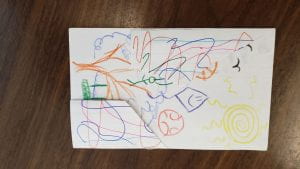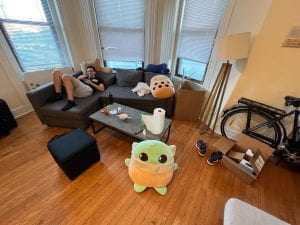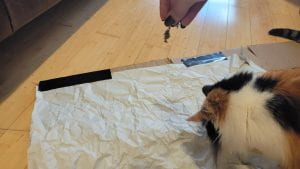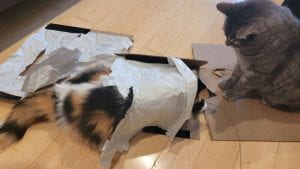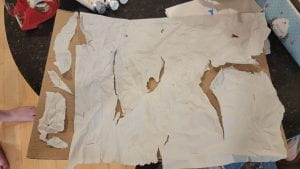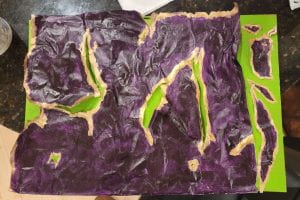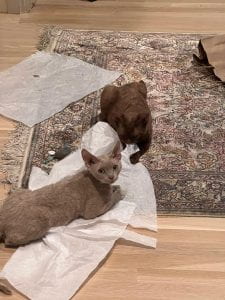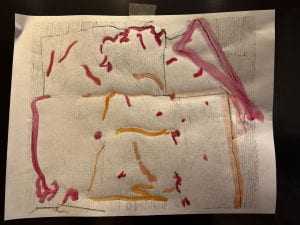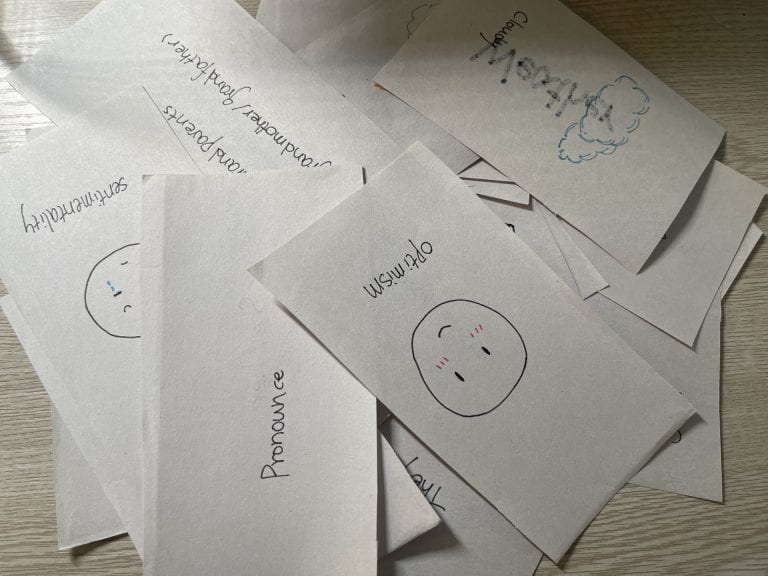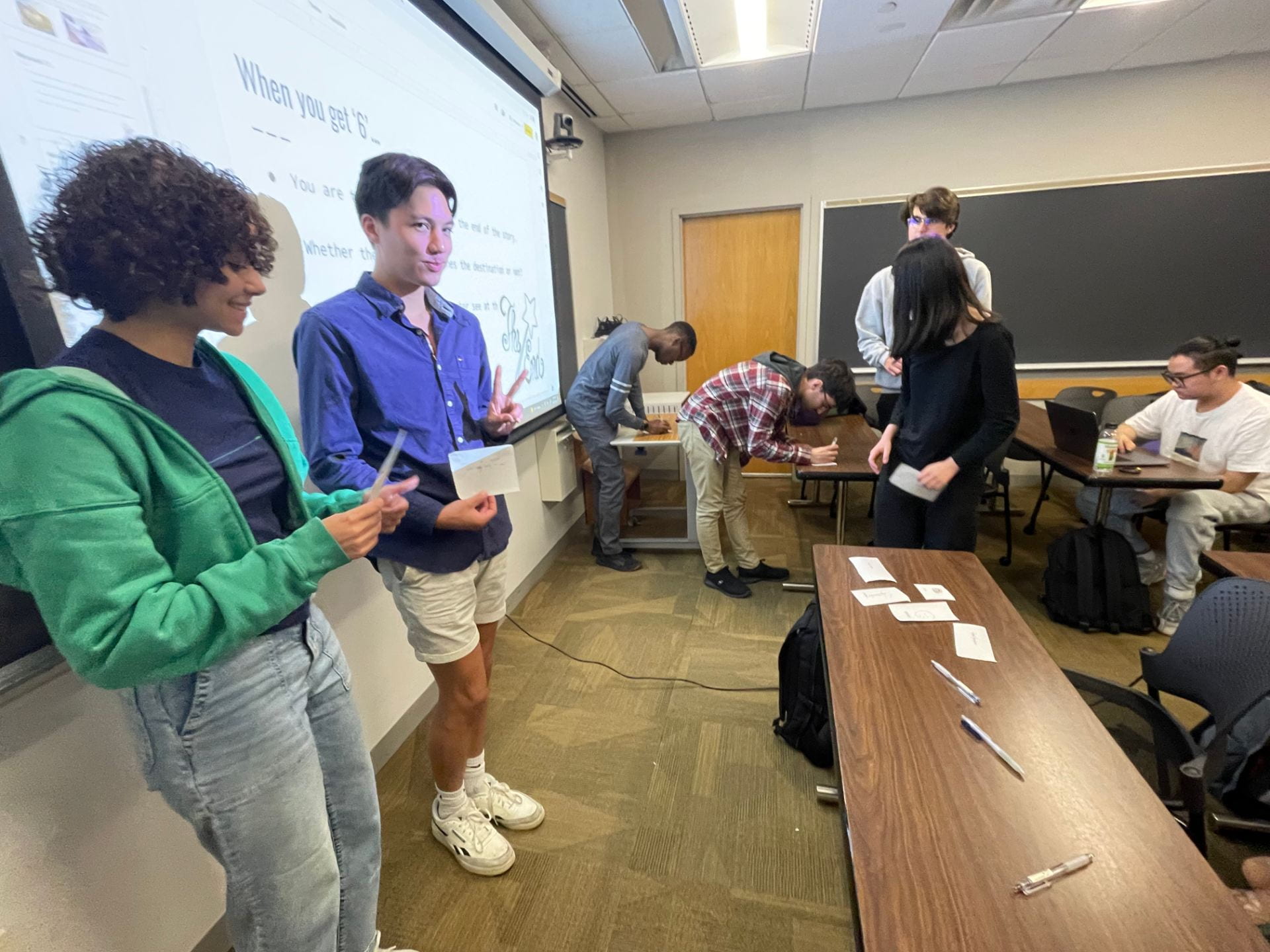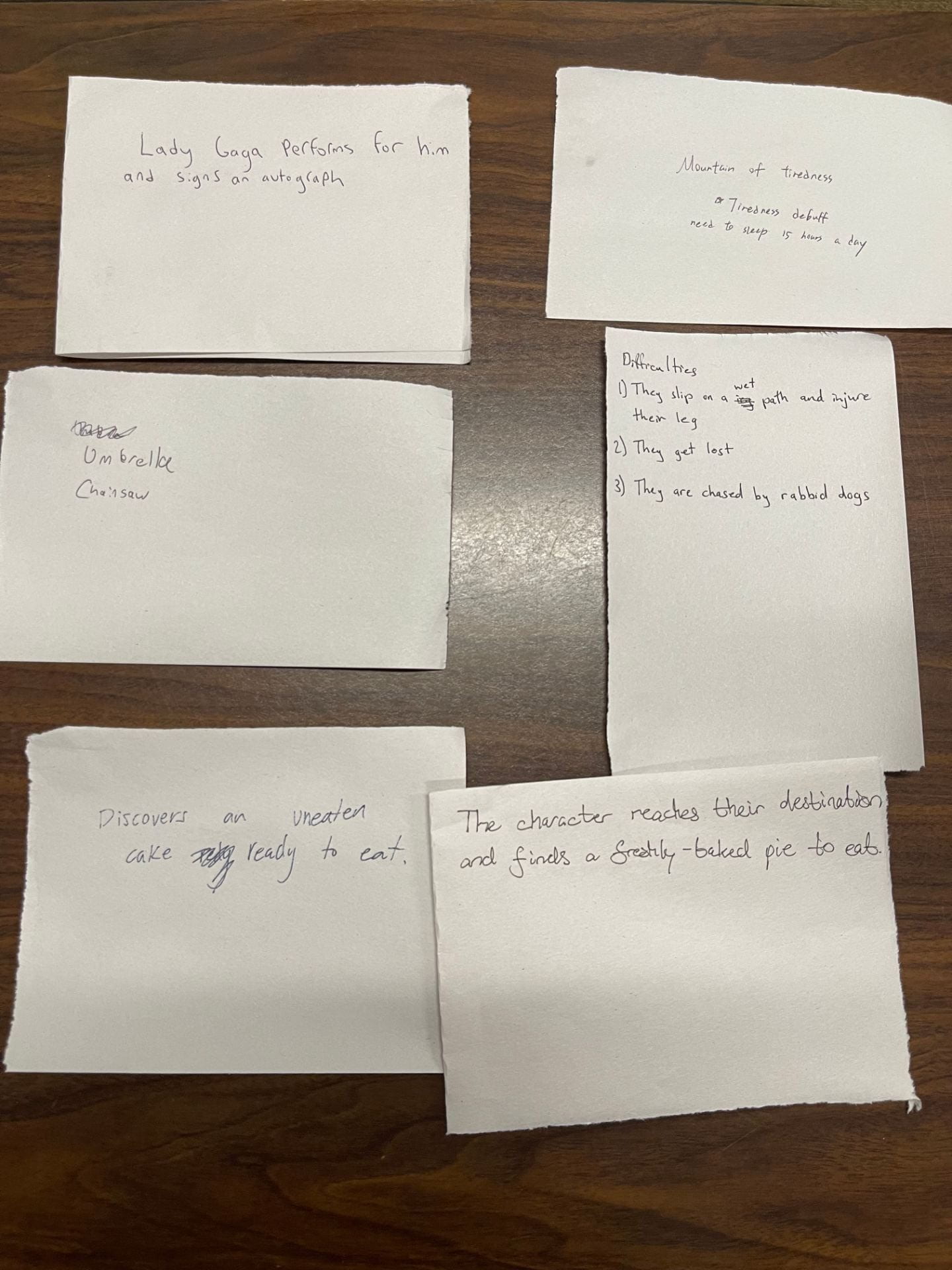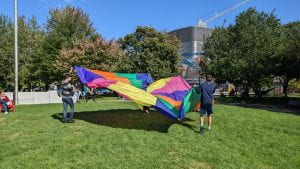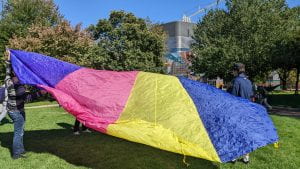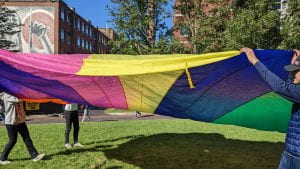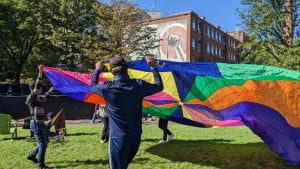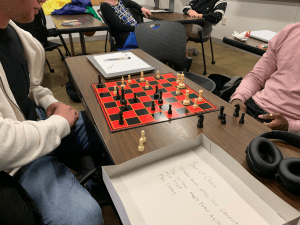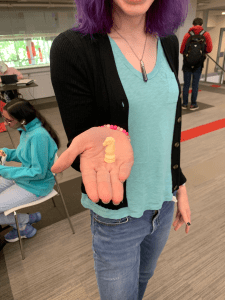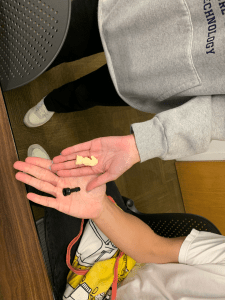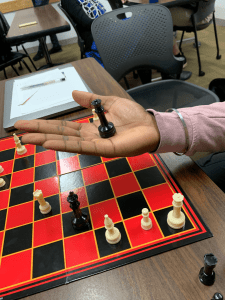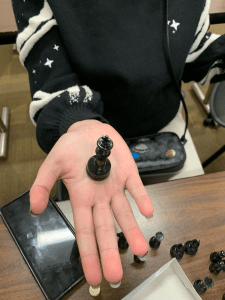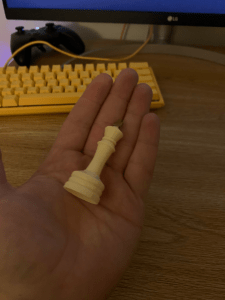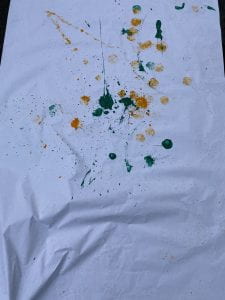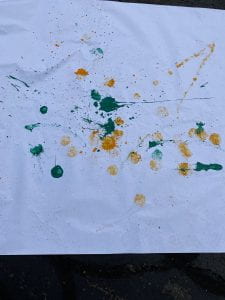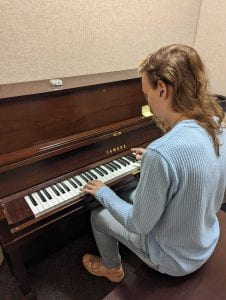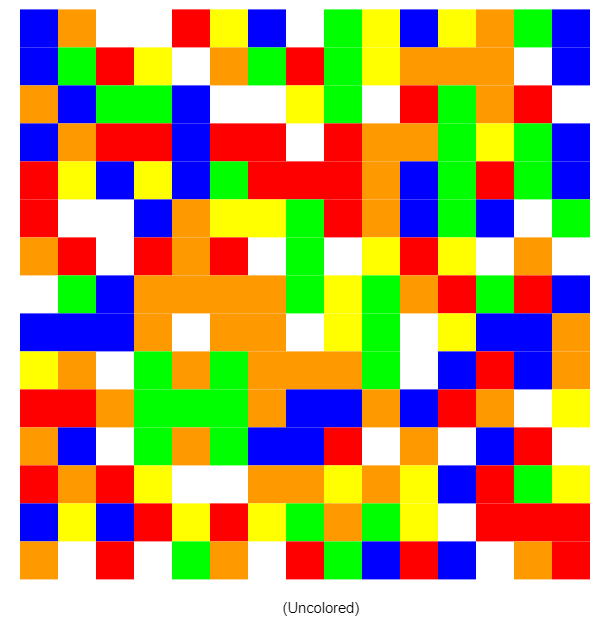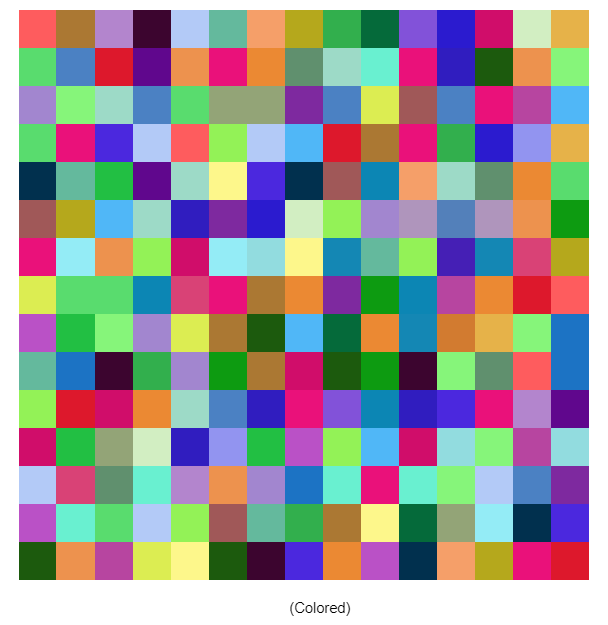Art of Layers
Find 4 People
One person fills a whole piece of paper with drawings using colored pencils
The second fills a piece of paper using paint or makers
The third blindfolds himself and cuts up one of these pieces of art
The final person glues pieces of their choice to the uncut art, making a new piece of art.
Artist Statement
While I think scores can be fun and beautiful, they do have downsides. The main downside of scores is that they are hard to document. The art of scores is often felt in the doing, making it hard to document the feelings and explain scores to other people. My main goal for this project was to have a score that was not only fun to do but resulted in a piece of art you could bring home. A piece of art that would last far past the duration of the score. My biggest inspiration for this score was exquisite corpse. When we played exquisite corpse in class that first day the results it just wowed me. It fascinated me how the vastly different drawings could blend together so seamlessly to make a cohesive and visually impressive product. Like the exquisite corpse, I looked to add some sort of hidden element to my score, hence, the blindfold. I was further inspired by indeterminate music from the likes of John Cage and David Tudor such as Music of Changes. I found this random element that caused the score to sound different every time very alluring, which inspired the choice to have two drawings/paintings. Having the blindfolded person cut one of these drawings/paintings adds that random chance element, so even if they were given the same drawings from a previous run through the score, the resulting piece would almost certainly be different. However, what I dislike about indeterminate music is I find it doesn’t really sound good. There is almost too much random in many of these pieces. I had originally considered also having the blindfolded person glue and place the pieces they cut out onto the first drawing. Not only did I think this would kind of be a nightmare to perform because glue and blindfold don’t exactly seem like the best combo, but I also wanted to reign in the randomness of the score. Listening to Music of Changes is rough because it lacks purpose. It doesn’t feel like it is going anywhere. By allowing another person to place these cut-outs on the uncut paper the random chance element contributes to the piece because there is the intention behind where the 4th person places the cut-out. It allows for the random chance to create new meaning rather than drowning out the purpose behind the piece.
Examples
Person 1:
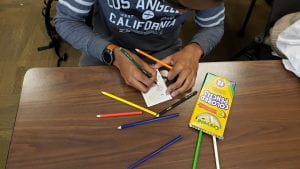
Person 2:
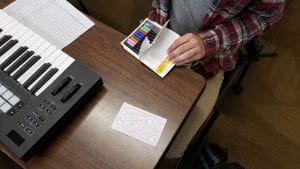
Person 4:
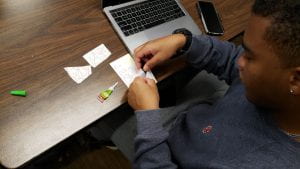
Final Product:
